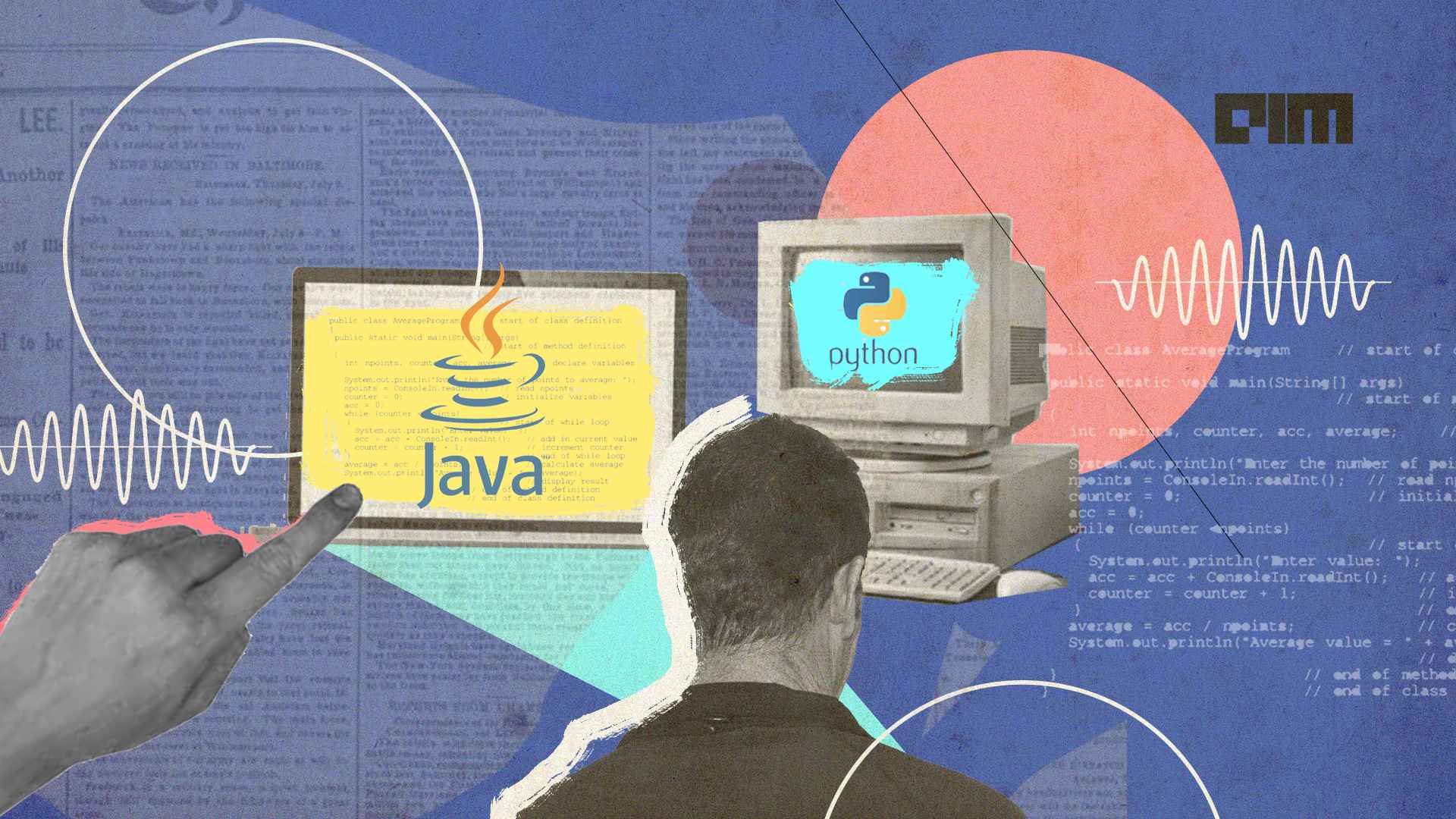Interpreted high-level programming language Python was designed by Guido van Rossu, and was first released on February 20, 1991. Its object-oriented approach helps programmers write both small and large scale code clearly.
Java, another object-oriented programming language, was designed by James Gosling and was first released on May 23, 1995. Java has some low-level facilities similar to C and C++, but it is essentially a high-level language and is mostly used for client-server web applications.
While it has always ranked as one of the topmost popularly used programming languages, Python recently overtook Java to become the most popular programming language for the first time in more than 20 years, according to the TIOBE index for October 2021. Today, we will compare the two programming languages from the data science perspective.
Java Vs Python
Syntax
One of the key differences between Java and Python lies in their syntaxes. In Java, a programmer has to define the data type of a variable when writing the code. And this data type cannot be explicitly changed; it remains the same throughout the life of the program. Therefore, this feature makes Java a strongly typed language.
In the case of Python, the data type of a variable is defined automatically at the runtime. Additionally, it can be changed throughout the program’s life, making Python a dynamically typed programming language.
Dynamic typing not only allows ease of usage but also ensures lesser lines of code. Additionally, Java comes with very strict syntax rules — missing a semicolon here, or forgetting enclosing braces there, will result in an error during compilation. Python, on the other hand, does not follow such complex programming structures, and thus, it wins the syntax game since it is easier to learn and use.
Performance
When it comes to speed, Java takes less time to execute source code than Python. This is owing to the fact that Python is read line by line; that is, it is an interpreted language. This feature makes Python slower than Java in terms of performance. In fact, in a Python program, debugging occurs during the runtime. Java, on the other hand, performs multiple computations at the same time.
Frameworks and Tools
Both Python and Java offer a list of libraries to support data science, data analytics, and machine learning tasks.
For instance, Python offers the following libraries:-
- Pandas: It is the most popular library in Python that is open-source. The library is used for processing large datasets. It provides flexible, quick and expressive data structures along with intuitive features such as data alignment, fancy indexing and handling of missing data. To learn more about Python Pandas, check this list of 10 online resources.
- SciPy or Scientific Python: As the name suggests, it is used to solve problems related to science, complex mathematics and engineering. It provides routines for statistics, linear algebra, optimisation and integration.
- NumPy, or Numerical Python: It is a fundamental tool for statistical and mathematical computations. Libraries including SciPy, Pandas, Matplotlib, and Statsmodels are built on top of NumPy.
- TensorFlow: It is developed by the Google Brain Team, and the open-source library is used mostly for deep learning applications in Python. It enables the deployment of ML-based applications.
The list of the top Python libraries available for data science in 2021 can be checked here.
Java offers the following tools for data science:
- WEKA 3: It is short for Waikato Environment for Knowledge Analysis. It is an open-source software providing data implementation and processing tools. It is mostly used for predictive modelling, data mining and analysis.
- Apache Spark: It is an easy-to-use and fast engine for big data processing. Built on Apache Hadoop MapReduce, open-source Apache Spark is mostly used for processing large datasets. Additionally, it comes with built-in modules including Spark SQL, Spark Streaming, and Spark MLlib. Here’s a beginners guide to Apache Spark.
- Java ML or Java Machine Learning: This library comes with a huge collection of ML and data mining algorithms that can be used for data classification, processing and clustering.
- Deeplearning4j: It is an open-source library facilitating Java programmers to create ML applications.
Additionally, when researchers build their own libraries, they upload them on open source platforms such as GitHub. The humongous developers’ community support makes Python more suitable for machine learning applications.
Secondly, since Python’s learning curve is not as steep as Java’s, machine learning programmers, especially beginners, prefer the former over the latter. In fact, Python is considered a ‘beginner’s language’ Most of the online learning courses on machine learning and data science usually push for Python for its beginner-friendly features, making it all the more popular in the data science community.



















































































